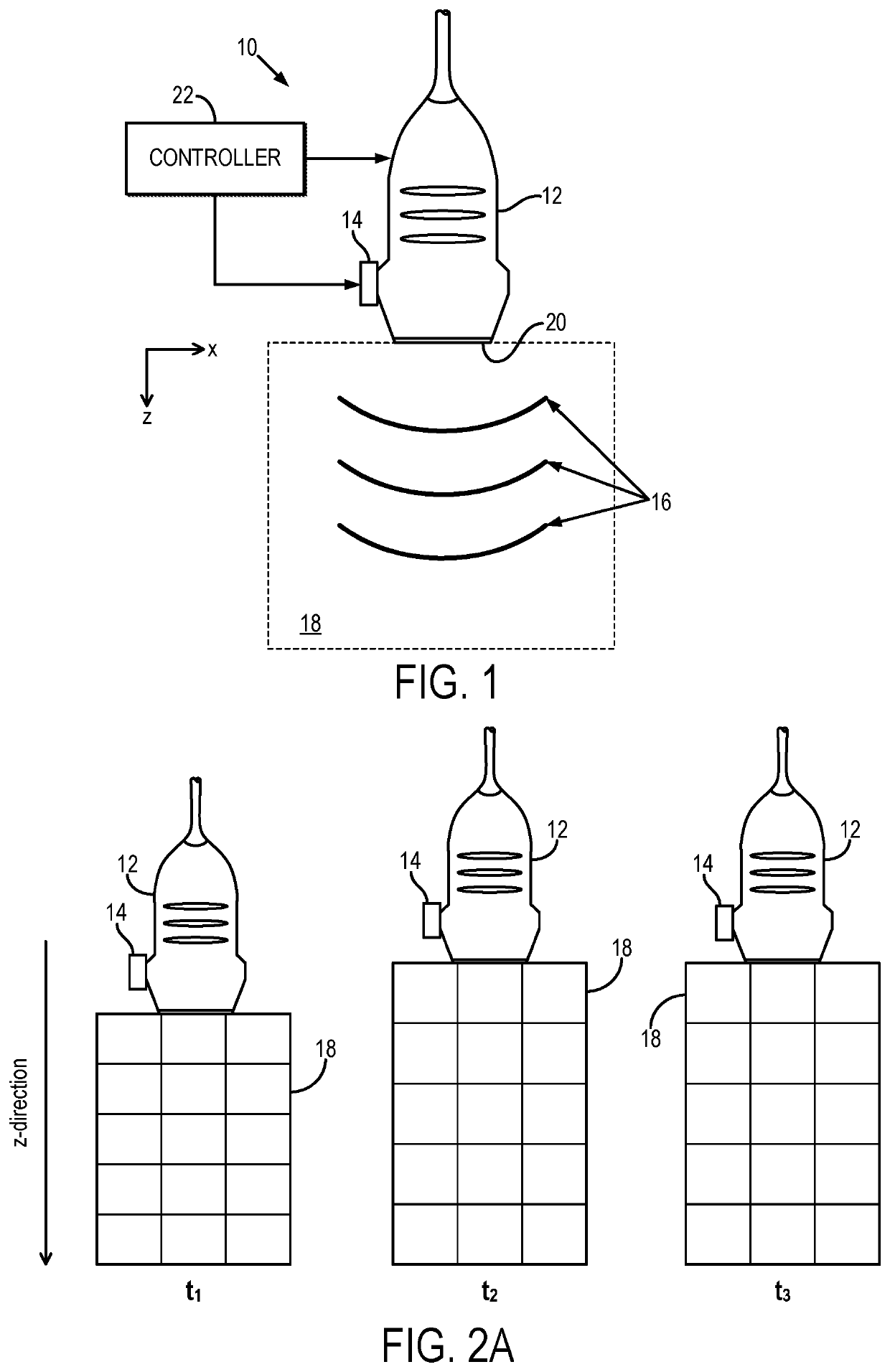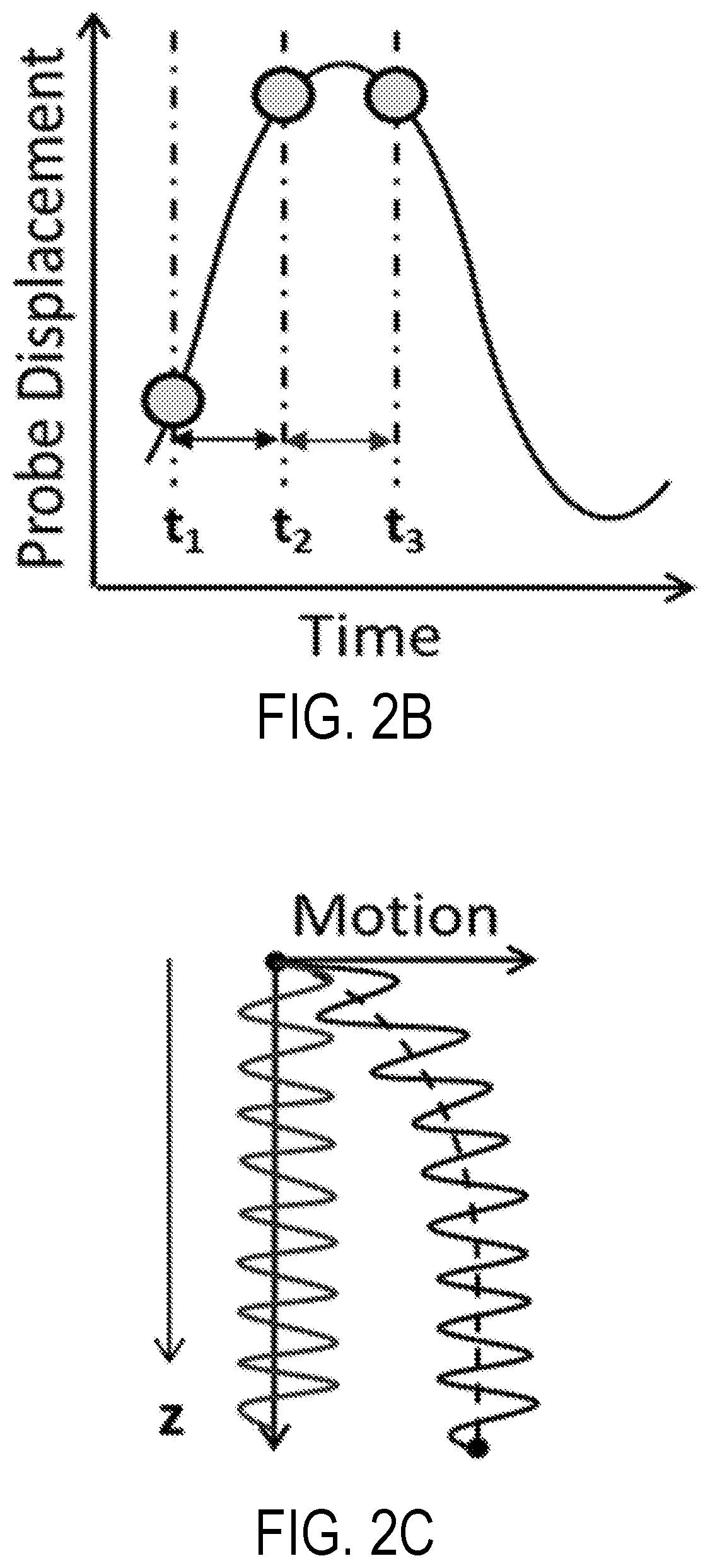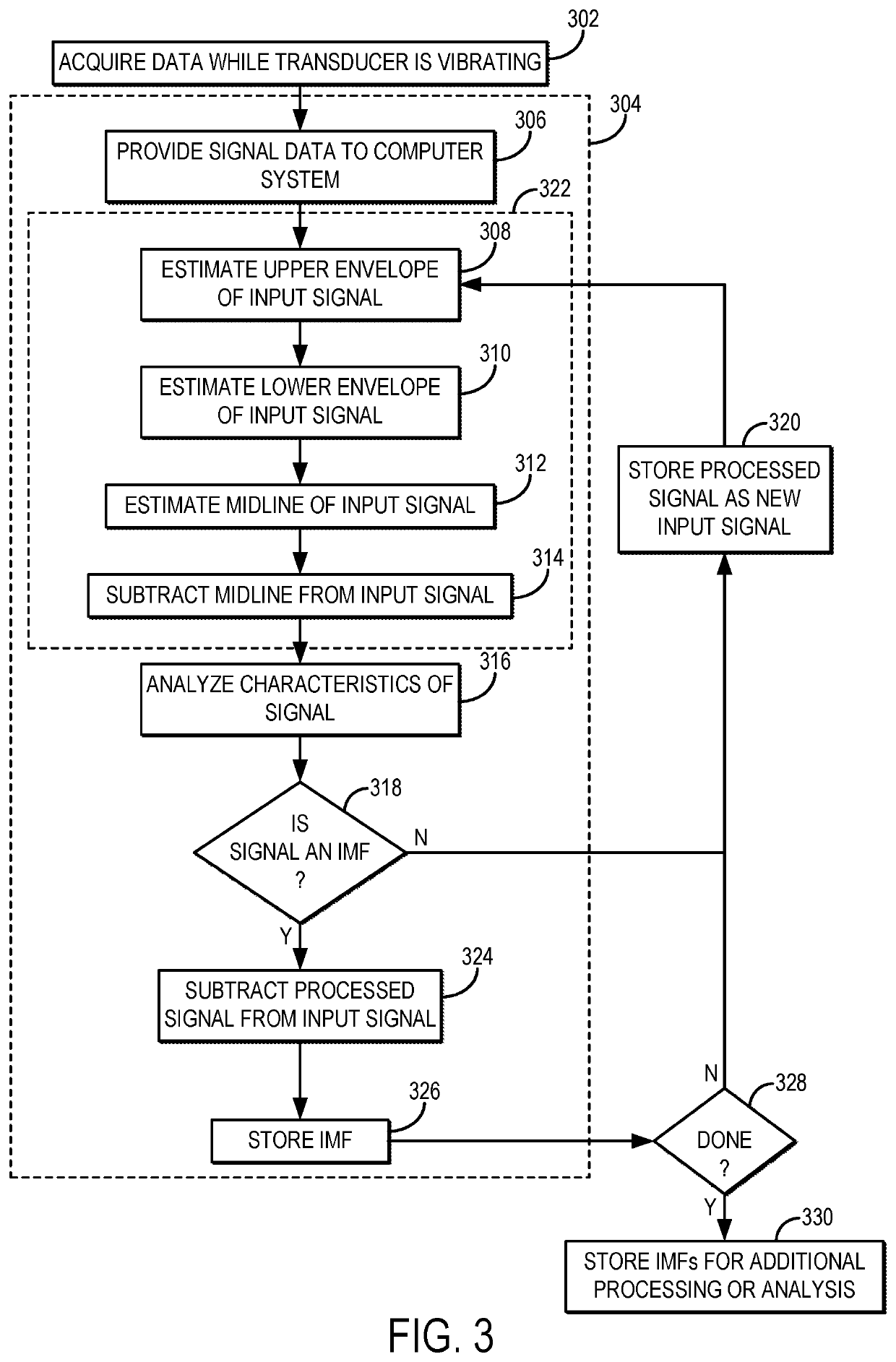Shear Wave Elastography with Ultrasound Probe Oscillation
a technology of ultrasound probe and elastography, which is applied in the field of shear wave elastography with ultrasound probe oscillation, can solve the problems of depth dependent probe motion artifact, limited elastography technique, and inability to image a large 2d area
- Summary
- Abstract
- Description
- Claims
- Application Information
AI Technical Summary
Benefits of technology
Problems solved by technology
Method used
Image
Examples
Embodiment Construction
[0017]Described here are systems and methods for processing data acquired using ultrasound elastography, in which shear waves are generated in a subject using continuous vibration of the ultrasound transducer. The systems and methods described here can effectively remove signals corresponding to residual motion artifacts associated with vibration of the ultrasound transducer. The systems and methods described here also provide for real-time visualization of shear waves propagating in the subject.
[0018]Referring first to FIG. 1, an example system 10 for inducing shear waves in an object 20 is illustrated. In this system, the transducer 12 is mechanically vibrated by an actuator 14, which causes the transducer 12 to oscillate in the axial direction (e.g., the z-direction in FIG. 1). As one example, the actuator 14 can be a mechanical actuator, such as a voice coil actuator. As the transducer 12 moves in the axial direction, shear waves 16 are induced within the object 18. Shear waves ...
PUM
 Login to View More
Login to View More Abstract
Description
Claims
Application Information
 Login to View More
Login to View More - R&D
- Intellectual Property
- Life Sciences
- Materials
- Tech Scout
- Unparalleled Data Quality
- Higher Quality Content
- 60% Fewer Hallucinations
Browse by: Latest US Patents, China's latest patents, Technical Efficacy Thesaurus, Application Domain, Technology Topic, Popular Technical Reports.
© 2025 PatSnap. All rights reserved.Legal|Privacy policy|Modern Slavery Act Transparency Statement|Sitemap|About US| Contact US: help@patsnap.com



